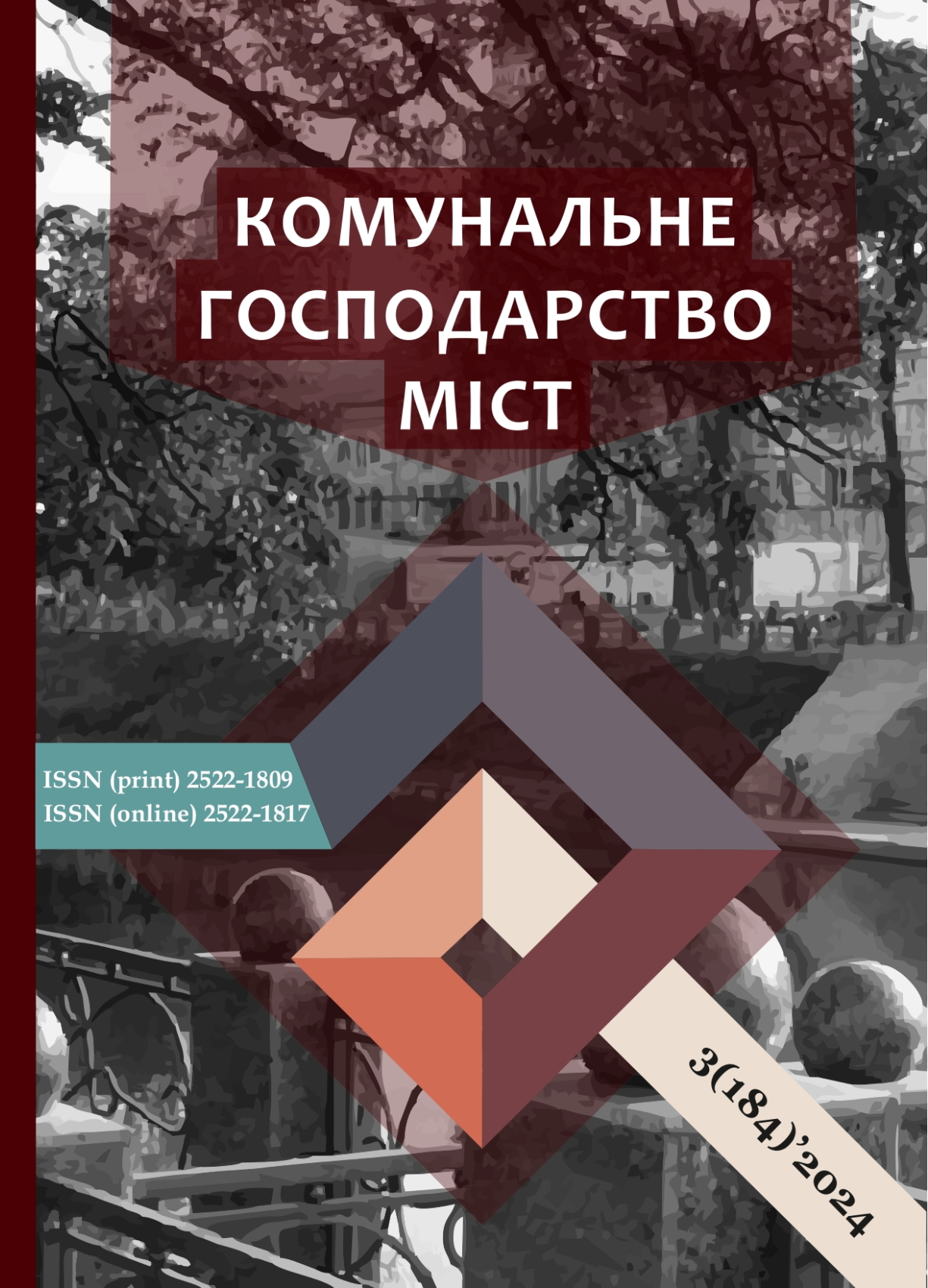USE OF A TWO-STAGE COMBINED SCHEME FOR HEAT EXCHANGERS CONNECTION IN HEATING POINTS FOR HOT WATER SUPPLY OF INSULATED BUILDINGS
DOI:
https://doi.org/10.33042/2522-1809-2024-3-184-93-98Keywords:
centralised heat supply, individual heating point, water heaters, hot water supplyAbstract
The article addresses the features of the functioning of centralised heat supply systems of residential micro-districts considering the improvement of thermal insulation of existing buildings. It also analyses the performance characteristics of hot water supply heaters installed on individual heat points of insulated buildings. The authors compared the heat transfer surface area of heaters and network water flow rate through the heating point for one-stage and two-stage combined schemes of connection of heat exchangers and heat networks.
The analysis of calculation results showed that using a two-stage combined connection scheme reduces the consumption of network water through the individual heat supply unit compared to the one-stage scheme. However, the two-stage scheme causes the necessity to increase the heat transfer surface area compared to the one-stage connection scheme. We generalised the results by formulas for calculating water flow rate from distribution heat networks and heat transfer surface area. It is possible to use the obtained results to develop a strategy for reforming micro-district centralised heating systems.
Using a two-stage combined connection scheme for hot water supply heat exchangers installed on individual heating points (IHP) of additionally insulated buildings reduces network water consumption through the individual heating point by 8–16% compared to a one-stage connection scheme. The device of a two-stage combined scheme in comparison with a one-stage scheme causes the increase of heat transfer surface area of heat exchangers of the hot water supply of individual heating points from one and a half to two times depending on the accepted design temperature of heating of cold water at the first stage of the heating unit. The results of calculations are approximated by equations, allowing, with acceptable accuracy, to compare the indicators of two-stage combined and one-stage schemes of connection of water heaters for individual heating points of insulated buildings.
References
Tovazhnyansky L., Kapustenko Р., Khavin G. et al (2004) Plate heat exchangers in industry; red. by L. L. Tovazhnyansky. Kharkov: NTU "KhPI", 232 p.
Taradai A.M. (1998) Fundamentals of plate heat exchang-ers design for heat supply systems. Kharkov: Osnova, 192 p.
Zinger N. M., Bestolchenko V. G., Zhidkov A. A. (1998) Improving the efficiency of heat supply stations. Мoscow: Stroyizdat, 185 p.
Lee, J., & Lee, K.-S. (2014). Flow characteristics and thermal performance in chevron type plate heat exchangers. International Journal of Heat and Mass Transfer, 78, 699–706.
Saha, S. K., & Haaris Khan, A. (2020). Numerical Study on the Effect of Corrugation Angle on Thermal Performance of Cross Corrugated Plate Heat Exchangers. Thermal Science and Engineering Progress, 100711. doi:10.1016/j.tsep.2020.100711.
Collis, D. C., & Williams, M. J. (1959). Two-dimensional convection from heated wires at low Reynolds numbers. Journal of Fluid Mechanics, 6(03), 357. doi:10.1017/s0022112059000696
Patrick Mitchell: Central Heating, Installation, Maintenance and Repair. Writers Print Shop, 196 (2008).
Domestic Water Heating Design Manual (2nd Edition), American Society of Plumbing Engineers (ASPE) (2003).
International Code Council. International Energy Conservation Code. Falls Church, VA, 2018.
Malyarenko V. (2006) Fundamentals of buildings thermal physics and energy saving. Kharkiv: SAGA, 484 p.
Malyarenko V., Redko А., Chaika Yu., Povolochko V. (2001) Technical thermophysics of buildings and structures envelopes. Kharkov: Rubicon, 280 p.
Aleksahin A., Boblovskiy A. (2012) Evaluation of energy-saving potential of functioning residential buildings. Energy saving. Power engineering. Energy audit. № 1(95). P. 10–15.
Aleksahin О.О. (2010) Thermal calculations of district heating systems. Kharkov: KNАME, 138 p.
Wong H.Y. (1977) Handbook of Essential Formulae and Data on Heat Transfer for Engineers. Longman, London and New York.
Downloads
Published
How to Cite
Issue
Section
License
The authors who publish in this collection agree with the following terms:
• The authors reserve the right to authorship of their work and give the magazine the right to first publish this work under the terms of license CC BY-NC-ND 4.0 (with the Designation of Authorship - Non-Commercial - Without Derivatives 4.0 International), which allows others to freely distribute the published work with a mandatory reference to the authors of the original work and the first publication of the work in this magazine.
• Authors have the right to make independent extra-exclusive work agreements in the form in which they were published by this magazine (for example, posting work in an electronic repository of an institution or publishing as part of a monograph), provided that the link to the first publication of the work in this journal is maintained. .
• Journal policy allows and encourages the publication of manuscripts on the Internet (for example, in institutions' repositories or on personal websites), both before the publication of this manuscript and during its editorial work, as it contributes to the emergence of productive scientific discussion and positively affects the efficiency and dynamics of the citation of the published work (see The Effect of Open Access).

